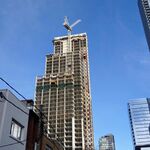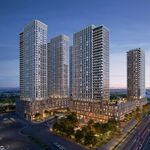AlvinofDiaspar
Moderator
Video recording of the March WT DRP meeting:
AoD
AoD
In total, we heard from over 900 members of the public from February 3, 2021, to March 4, 2021. Feedback was sought on five key project areas through our virtual community consultation meeting, online survey, and written correspondence.
· Portal Location
· Network Phasing
· Transit Project Assessment Process (TPAP)
· Design of Union and Queens Quay-Ferry Docks Stations
· Queens Quay East Street Design
Why does Toronto do everything possible to slow transit expansion?
Expansion of the Shanghai Metro, 1994-2014

From link.
Here, any new government party (or mayor) in power cancels the previous plans, and starts all over again with their "new and improved" plans.There is no doubt that dictatorial government structures operate more efficiently and quickly. Things move quicker when theres no zoning permits, unions, workers rights, archeological surveys, worker safety protocols, communality involvement feedback, expropriation laws, environmental assessments. Etc etc.
What tunnel as it will screw up the T connection at Cherry St??? Could be the RR corridor or for QQ connection to the existing system.
The REM is being built at Chinese-like speeds...There is no doubt that dictatorial government structures operate more efficiently and quickly. Things move quicker when theres no zoning permits, unions, workers rights, archeological surveys, worker safety protocols, communality involvement feedback, expropriation laws, environmental assessments. Etc etc.
That's definitely part of it, but economy of scale is also an absolute factor. Despite no longer being a defacto dictatorship (sort of), Moscow is still in full swing with cheap metro expansion. The trick is economy of scale - when Moscow finishes tunneling an extension, instead of abandoning the bores, they dig them out, bury them elsewhere, and they start digging something else. This means extensions are happening constantly, and skilled labour also develops, and the engineers and workers learn how to quickly build and design extensions which lowers costs and construction time. They don't have to spend 10 years designing a route, ordering new tunnel bores, designing new station types, reinvent wayfinding, etc.There is no doubt that dictatorial government structures operate more efficiently and quickly. Things move quicker when theres no zoning permits, unions, workers rights, archeological surveys, worker safety protocols, communality involvement feedback, expropriation laws, environmental assessments. Etc etc.
I am not sure I would agree that Ontario is well ahead on 'transit planning'. We are probably the world leader on putting lines on maps to show future transit lines but that is REALLY not 'planning'. Maybe wishful thinking or political posturing?I would say that Ontario is forward thinking on #1. There are a lot of longer-term transit projects out there that have some of their initial planning done (Trafalgar BRT, 407 Transitway, KW's ION planning process come to mind)...there just needs to be forward momentum from that.
Re #5 with overbuilding stations: With timed-transfers, there's pretty much no need for many of the bus terminals that are now being built on the Crosstown or being anticipated for future lines. On street-transfers are pretty much the norm in a lot of places, and aside from a few stations that are built well-away from the road (Warden comes to mind, as well as Kipling). Islington, IMO for example, doesn't need a new terminal, the buses there should either be interlined or use on-street loops. Maybe if you need some bus bays, look at Brampton Gateway Terminal on-street terminal as an example.
Ironically though, the complaints about the TYSSE extension stations mostly feed into #1: Downsview Park (future Barrie RER), Finch West (under-construction Finch West, future east extension), 407 Station (future transitway) and VMC (aggressive development) are built for future lines/development. Out of those stations, I think only Pioneer Village is overbuilt, and also not anticipating the long-term Steeles RT line that's been on York, Toronto, and Metrolinx's minds for ages now...
I would say that Ontario is forward thinking on #1. There are a lot of longer-term transit projects out there that have some of their initial planning done (Trafalgar BRT, 407 Transitway, KW's ION planning process come to mind)...there just needs to be forward momentum from that.
Re #5 with overbuilding stations: With timed-transfers, there's pretty much no need for many of the bus terminals that are now being built on the Crosstown or being anticipated for future lines. On street-transfers are pretty much the norm in a lot of places, and aside from a few stations that are built well-away from the road (Warden comes to mind, as well as Kipling). Islington, IMO for example, doesn't need a new terminal, the buses there should either be interlined or use on-street loops. Maybe if you need some bus bays, look at Brampton Gateway Terminal on-street terminal as an example.
Ironically though, the complaints about the TYSSE extension stations mostly feed into #1: Downsview Park (future Barrie RER), Finch West (under-construction Finch West, future east extension), 407 Station (future transitway) and VMC (aggressive development) are built for future lines/development. Out of those stations, I think only Pioneer Village is overbuilt, and also not anticipating the long-term Steeles RT line that's been on York, Toronto, and Metrolinx's minds for ages now...




